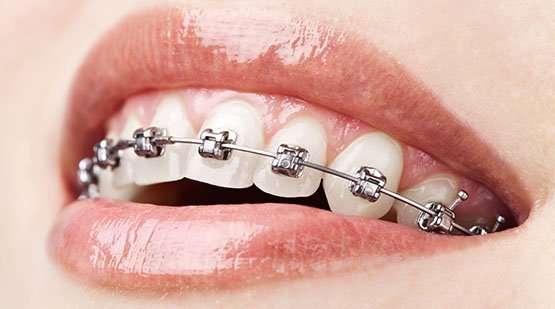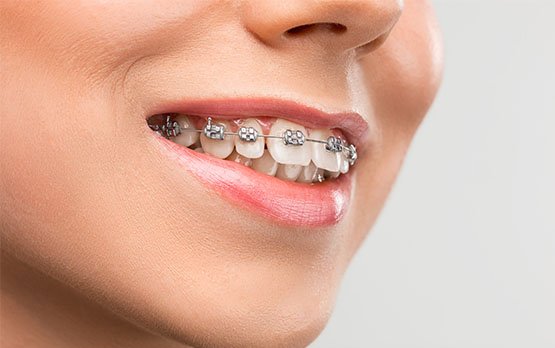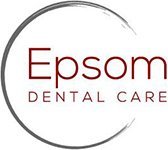Dental Braces
Dental Braces Belmont WA
Braces are wire-based appliances used to correct crowded and misaligned teeth, or bad bites.
Many people who need dental braces get them during their early teens, but adults also can benefit from wearing braces.
Dental braces properly align your teeth and jaws to produce an even bite and pleasing smile.
For minor corrections, a series of customised, removable appliances called clear aligners or “invisible braces” can be used. These have a more pleasing appearance, during treatment, to some adults.


Treatable Cases
Dental braces offer corrective treatment for:
- Overcrowded or crooked teeth
- Gapped teeth
- Overbite or overjet
- Underbite
- Other jaw alignment problems that cause an irregular bite
Teeth and jaws that are aligned correctly may enhance not only the look of your teeth but also the wellbeing of your mouth and the way you bite, chew, and speak.
How you prepare
Preparation for braces generally involves:
Oral examination
Your Belmont WA dentist performs a full examination of your teeth, jaws and mouth.
X-rays. A series of X-rays will be taken to determine the position of the teeth.
Plaster models
You’ll bite into a soft material, which remains over your teeth for a few minutes. From this impression, a model of your teeth is created out of plaster, and your dentist assesses your bite.
In some cases, this model may be scanned for further evaluation or treatment decisions.
Potential tooth extraction
If your mouth is crowded, there may be limited or no room in the jaw for all the teeth. Your dentist may recommend extracting one or more permanent teeth to allow room for the remaining teeth to fit properly.
This allows the teeth to fit together better and also allocates adequate space for efficient cleaning.
Other procedures
In more serious cases, in which tooth movement alone will not correct a bite, jaw repositioning surgery is required in combination with orthodontics.
After your dentist has assessed your teeth and jaws, a treatment plan will be customised for you. This most often includes the use of fixed braces, which are temporarily bonded to your teeth.
Placement of braces
Fixed dental braces typically consist of these components:
Brackets are attached to the outside surfaces of the teeth. They can be made of stainless steel, ceramic (clear or tooth-coloured), or other materials.
Ring-like bands that encircle the molar teeth. These bands are usually made of stainless steel or titanium. A buccal tube attached to the band of the last molar holds the end of the connecting wire.
A flexible wire (archwire) connects all of the brackets and bands. The archwire controls the movement of the teeth.
Small rubber bands (elastic ties) or metal ties secure the wire to the brackets (although some braces have a sliding mechanism instead of ties to secure the wire).
Larger bands may also be used to move teeth. Stretching elastics between the upper and lower jaws is another option to produce more pressure.
Headgear is attached to the braces. It is usually worn only at night, and it may be helpful in more complex cases. Headgears produce additional pressure and help hold or move teeth into the proper position.
Temporary anchorage devices (TADs). Instead of headgears or rubber bands, TADs are an option for some patients. Small screws are placed through the gums into the jawbone and can then be used as anchorage to apply constant pressure to move the teeth.
Care for Dental Braces
To ensure that braces function well, provide utmost attention in cleaning the orthodontic appliance and practising good oral hygiene.
Proper care of braces makes them comfortable to wear and prevents damage to the teeth and the braces. It will also keep the gums and teeth in their best condition while under orthodontic treatment.
The chance of plaque build-up and food lodging between teeth increase when wearing an orthodontic device. Following the recommended twice a day brushing, flossing, and rinsing using mouthwash, remains crucial.
Some food and drinks need to be avoided, as well. Acidic and sugary foods and drinks can erode the tooth enamel and cause decay. Discolouration of the brackets may also occur.
It is also essential that you observe a healthy and balanced diet. Eat foods that are nutritious for your teeth like cheese, cashews, apples, carrots, and celery.
Consultation with your dentist is advised to make sure that braces are effective, secure, and your mouth is healthy.
Dental Braces in Belmont WA
If you have any questions about dental braces, feel free to contact us today at (08) 9478 2349. We would be happy to answer your questions.
We are located at 5/132 Epsom Ave in Belmont WA.
Frequently Asked Questions
Do I really need braces?
If your dentist recommends braces, you probably need them. You can always ask your Applecross dentist how necessary they are, but remember that getting braces is not just about a better smile. Having straighter teeth also helps keep you healthier and can prevent dental and jaw issues.
Do braces hurt?
You should never feel pain while wearing braces. If you do, call us right away. When you first get your braces, and after adjustments, your teeth can feel a little sensitive. Mild discomfort is easily managed with over-the-counter pain relievers and goes away in a few days.
How often will I need to come in for visits while I'm wearing braces?
The frequency of your visits will depend on your needs. In general, most patients visit us for adjustments between every four and eight weeks.
Will my teeth move after my braces are removed?
Your teeth may slightly move over time, making retainers an important part of your treatment. Your Applecross dentist may give you a removable retainer or attach a longer-term retainer behind your teeth – out of sight.

